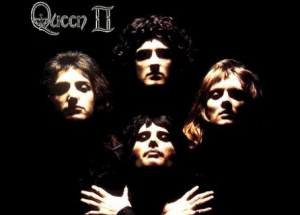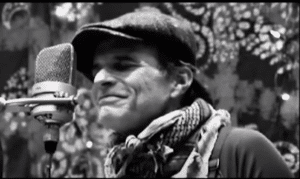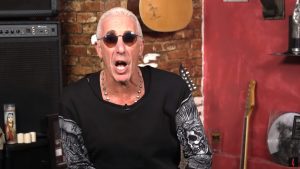The Wildest and Most Insane 2 Months Of Ozzy’s Life

Ozzy Osbourne for the MV of Straight To Hell - Ozzy Osbourne / Youtube
1982 wasn’t just a year for Ozzy Osbourne; it was a hurricane of chaos. Two whirlwind months saw him embroiled in a series of events that were equal parts hilarious, heartbreaking, and utterly strange.
From chomping on a bat onstage to a controversial Alamo escapade, Ozzy’s antics made headlines and cemented his image as rock’s ultimate wild child. Though funny to some, these incidents brought him heartache, legal woes, and solidified his infamy.
Ozzy’s notorious escapades weren’t just laugh-worthy stunts. They were deeply personal choices with steep consequences. He grappled with internal struggles and faced the harsh realities of his actions.
Though he went on to achieve massive success in the ’90s, from chart-topping albums to a Black Sabbath reunion, the legacy of 1982 lingered. Today, he undoubtedly reflects on that period with a bittersweet mix of sadness, regret, and perhaps even a flicker of dark amusement.
https://twitter.com/SukursalRock/status/1749219064734454233
That notorious bat-biting antic
On a wild January night in 1982, rock legend Ozzy Osbourne bit the head off a real bat thrown onstage in Des Moines. Shocked by the surprise prop, Ozzy recounted with a grin, “It was a real bat, ’til I bit the head off it”. This bizarre incident cemented Ozzy’s infamous rock-and-roll legacy, forever etched in concert lore.
When Mark Neal—the guy who said he brought the bat to the concert—explained the situation, the tale took a turn for the worst. Neal claimed the bat had been dead for two weeks and that his attempt to housebreak it had been unsuccessful. Osbourne needed medical attention, so the argument over whether the bat was alive or dead took a backseat.
“I had to go straight from the gig to the hospital, and the guy said, We better give you some precautionary rabies shots,” Osbourne said in the documentary Don’t Blame Me: The Tales of Ozzy Osbourne. Ozzy received a series of shots, including injections in each arm, each rear, and the top of his leg.
Thinking back on the strange event, the iconic rockstar emphasized the negative outcomes and warned against romanticizing similar acts. “For anyone out there who thinks it’s ‘cool’… and if you want to be a complete dick, try it,” he said. The bat-biting incident, which combined shock value with a comedic twist, remains a weird yet famous moment in Osbourne’s career history.
The infamous Alamo incident that led to an arrest
A month before a Texas concert, Ozzy Osbourne found himself embroiled in another controversial incident, even muddier than the infamous bat bite. The legend goes that he was arrested for peeing on the Alamo, but the truth remained murky until 2016 when he revisited the scene on a TV show.
While exploring San Antonio with his son, Ozzy met a state representative who recounted the myth. They then sought the original police report, finally untangling the tale. Much to Ozzy’s relief, the arrest was solely for public intoxication, not the act everyone assumed. The councilman assisting them emphasized the importance of historical accuracy and warmly welcomed Ozzy back to the city.
“I nearly broke into my happy dance,” Ozzy admitted afterward, though not thrilled about the incident itself. A Texan magazine had previously placed the urination at the Cenotaph across the street, solidifying the inaccurate image.
While Ozzy isn’t keen to fix the narrative, he seems to understand its appeal. “Nobody wants me to say, ‘Hi, I’m a Christian,’” he quipped. The myth, fueled by his reputation, serves as a testament to his rockstar image, even if it deviates from reality.
The death of Randy Rhoads
Ozzy’s journey continued beyond the bat and the Alamo controversy, but the shadow of Randy Rhoads’ death loomed large. Rhoads wasn’t just a musical inspiration for Ozzy’s post-Sabbath career; he was a dear friend and key collaborator on hits like “Crazy Train” and “Flying High Again”. Their bond went beyond music, with Ozzy describing their communication as “incredible”.
Tragedy struck on March 19, 1982. While traveling to a Florida festival, Rhoads, allegedly weary of rock life, expressed to Ozzy his desire to pursue higher education. Despite desperate pleas from Ozzy and others, Rhoads remained resolute. Little did they know, fate had other plans.
With the rest of the band, including a hungover Ozzy, resting, Rhoads, ironically afraid of flying, accepted a ride from a pilot with an expired license. This pilot, aiming for a cool stunt, buzzed the tour bus carrying the drummer and bassist. On the third pass, the plane clipped the bus, spiraled out of control, and crashed into a house. Rhoads, tragically, perished, his body identifiable only by his jewelry.
This loss devastated Ozzy. “It was worse than the worst acid trip I’d ever had,” he wrote. When Randy died, “a part of me died with him”. Ozzy never felt musically competent with Sabbath, but with Rhoads by his side, he experienced creative freedom like never before. Their collaboration on “Goodbye to Romance” symbolized this newfound confidence, something unimaginable during his Sabbath days.
https://twitter.com/historyrock_/status/1637761943850176512
Ozzy survived 1982 and more
Grief threatened to swallow Ozzy whole after Randy’s death. He teetered on the edge of a complete mental breakdown, the music that had once been his salvation now echoing with haunting melodies of loss. Yet, despite the darkness clinging to him like a shroud, Ozzy clawed his way back, driven by a raw, primal instinct to survive.
In less than a month, he was back on the road, the stage lights casting an ephemeral halo on his battered spirit. Bernie Tormé, Ian Gillan’s former guitarist, filled the void at this crucial juncture, lending his skills to Ozzy’s ravaged heart.
The years that followed were a tumultuous mosaic of highs and lows. From the hedonistic excess of a tour with Mötley Crüe, where excess became an art form, to the chilling legal battle with the parents of a teenage suicide, whose death they wrongly attributed to Ozzy’s music, his journey was an ongoing tightrope walk between oblivion and redemption.
Yet, those two harrowing months in 1982 remained etched in his memory, a stark reminder of the depths of despair he had traversed and the tenacity that had pulled him back to the light. The scars of Randy’s absence never truly faded, but they became fuel for his fire, pushing him to defy expectations and carve his own path, a testament to the unyielding human spirit’s ability to rise from the ashes, forever bearing the mark of its trials.











